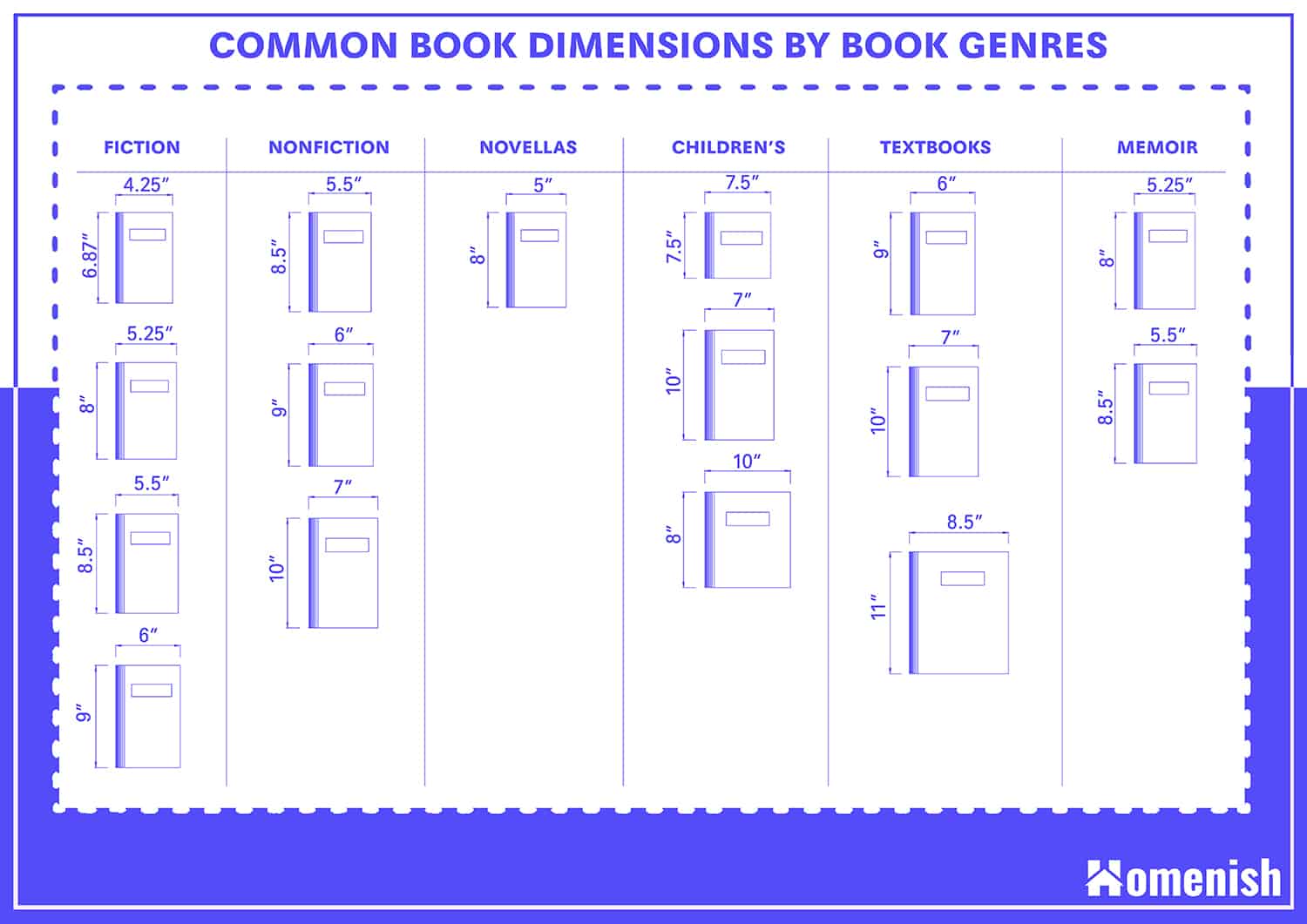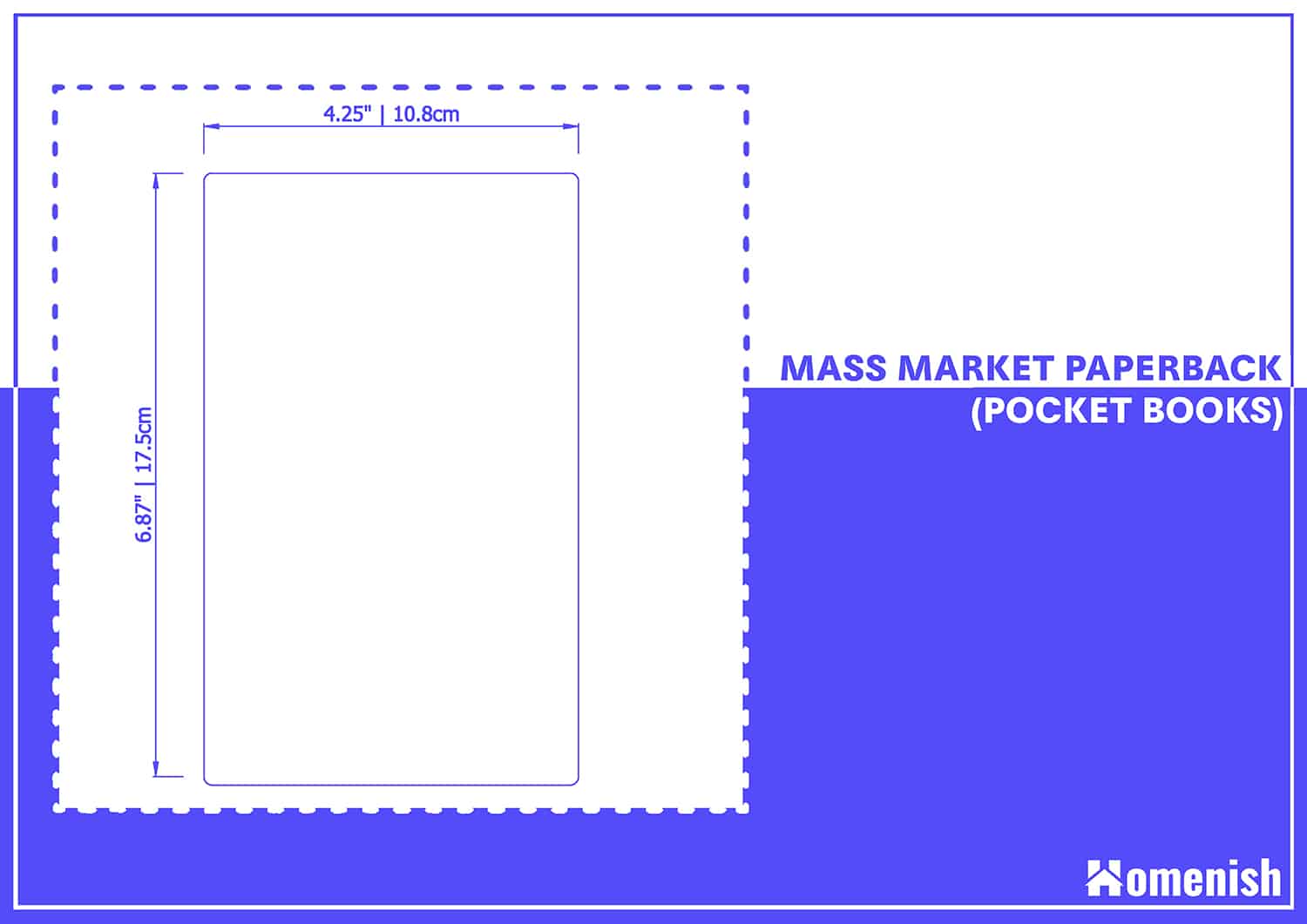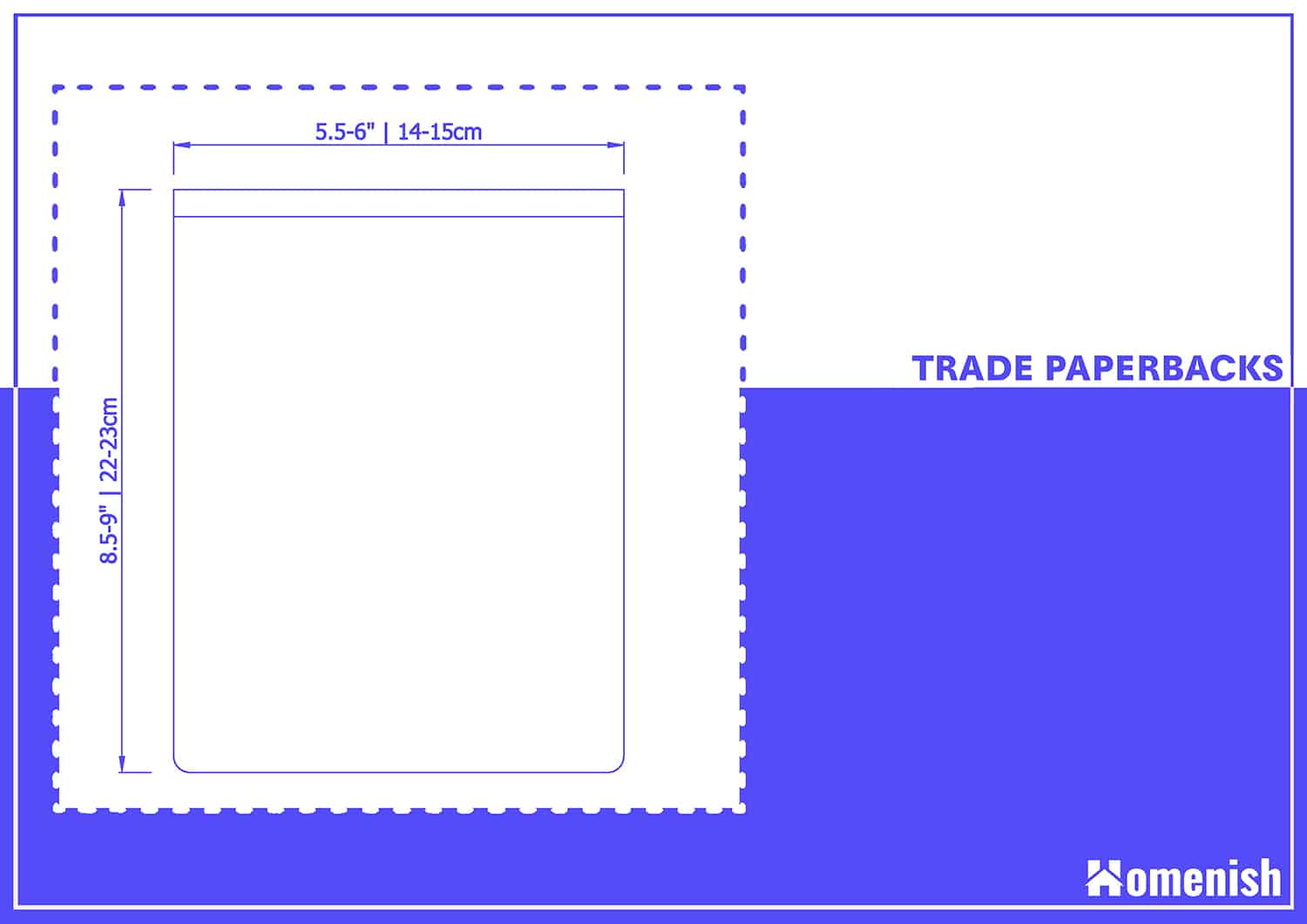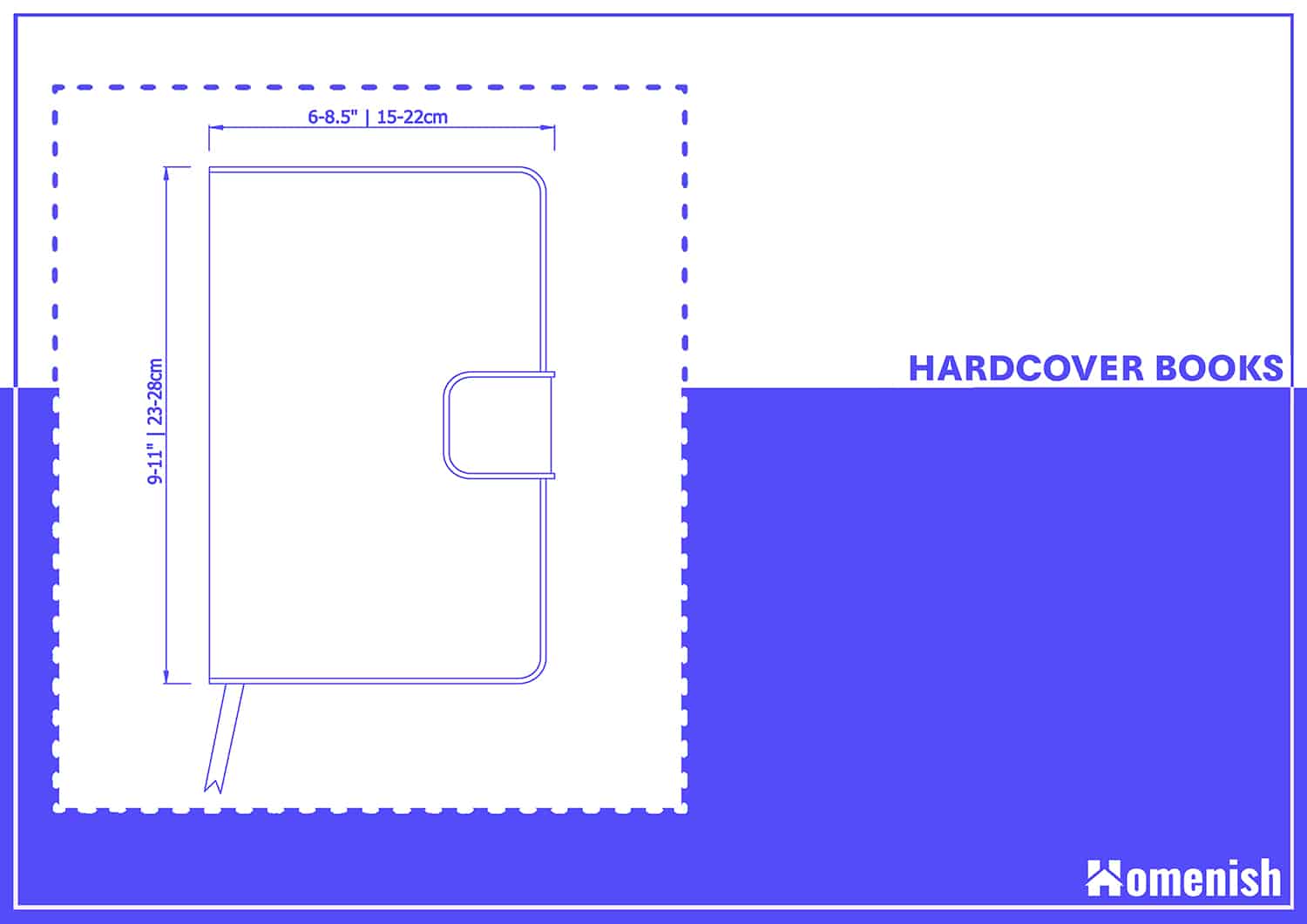Books have remained relevant despite the spike in ebook sales over the years. The expression, “curl up on a sofa with a good book,” was made in resonance with real books. Some people still cherish a book’s feel, texture, and weight, thus explaining their continued pertinence.
The publishing industry has been gravely disrupted by digital innovation with aspects such as ebooks and self-publishing. Nonetheless, some bookstores still prevail, and Amazon sells hardcovers and paperbacks by the numbers.
You may have wondered why some book spines stand out more than others on bookshelves, wondered why almost all children’s books appear the same way, or you are perhaps a self-publisher looking to invest some money in print but have fallen short on where to start.
This article will cover the various standard book sizes and why publishers and self-publishers have different books look certain ways. Knowing the book sizes will help you choose the right bookshelf dimensions.
The size of the book is often regarded as the trim size. This is the measurement of the width and height of the book. Publishers follow different guidelines when selecting book sizes for their authors’ content.
Ideally, different book genres have different word counts, but the trim size determines the number of words on each page, the wideness of the margins, and the book’s spine.
Table of Contents
Mass Market Paperback Dimensions
Often sized at 4.25 x 6.87 inches, these books are the most affordable in the lot, with low-medium quality papers that are not acid-free. What this means is that these papers are prone to smudging of ink and discoloration. In the early era of printing, these were the most commonly published books because, back then, mass-market publishing was the norm.
These “pocket” size books are very convenient and can fit even in the back pocket of your trousers, thus the coining of their name. Quantity trumps quality for these books as they are published to meet the demand of customers and are thus often sold at airports, grocery stores, and other retailers.
Trade Paperback Dimensions
Coming in bigger than the former, these books are typically 5.5 x 8.5 to 6 x 9-inch sized books and are generally sold in bookstores hence their name, “trade.” These books nestle between Mass market paperback-sized books and hardcover books. They have the rich charm of hardcovers and omit the low-quality trait of mass-market paperbacks. These books have a thick paper that’s often fastened by glue rather than stitches or staples.
Suppose you’re a self-publisher wanting to dip your toes into print. In that case, the above options are your most favorable options as they offer affordability, moderate quality, and convenience, attributes readers appreciate.
Hardcover Books Dimensions
These books come in the highest in price with measurements of 6 x 9 to 8.5 x 11 inches. What most top-selling authors do is print their first edition in this quality and size to maintain their durability over time. Hence durability is one of these book’s most commendable aspects.
The former two are prone to wear and tear from staying long on bookshelves, but these have stood the test of time, with some dating as far back as the 1800s. If you are starting out, these aren’t the books for you because their printing costs are too high to meet without the support of a publishing company.
Since many books’ first editions are published in hardcover for longevity, the majority of book collectors with a collection worth a fortune have hardcovers.
Book Dimensions by Genres

Book genres usually fall into these measurements (inches);
- Fiction books: 4.25 x 6.87, 5.25 x 8, 5.5 x 8.5, 6 x 9
- Nonfiction books: 5.5 x 8.5, 6 x 9, 7 x 10
- Novellas: 5 x 8
- Children’s books: 7.5 x 7.5, 7 x 10, 10 x 8
- Textbooks: 6 x 9, 7 x 10, 8.5 x 11
- Memoir: 5.25 x 8, 5.5 x 8.5
Why Does Book Size Matter?
We’ll move to why these measurements matter now that we have covered the standard book sizes. The last thing you need as a writer is to get the content right and get everything wrong with your choice of book size.
Costs
Since page count is attributed by trim size, the smaller your trim size, the larger the page count, but this is also determined by the length of the manuscript. If you’re looking to save on printing costs, an analysis of these sizes will guide you on the most reasonable size for your budget. Again, this also comes down to word count.
Presentation
How exactly do you want your book to be perceived? For impulsive book buyers, book covers draw them like a flame draws a moth. For instance, a memoir printed as a mass-market paperback is not reasonable because memoirs are often specific to a niche market, and part of their selling feature is the appearance of their book covers.
With hardcover books, richness, and visual appeal are often selling factors that stick out the most. Therefore, your desire for perception as a writer can easily be reflected in the choice of your book size.
Genres follow specific sizes
As highlighted above, there’s a standard size for genres. It’s therefore important for any writer to know the trim size of the genre they are writing for. You could be writing a Harlequin-style romance book known to be mass-market-sized. Printing this book in any other size would alienate your desired audience, who are keen on affordable books at the grocery store. They won’t know to look out for your book in hardcover and surely will not afford it.
In conclusion, book sizes are important for any writer to grasp, and to ensure optimum delivery, you could start with sample books before reaching out to your POD partner for full-on production.
If you are still stuck on the book sizes that best suit you, hire professional book production managers to guide your decision but also remember, genre attributes to book size in a major way, and it’s essential to produce beautiful books that your reader wants to not only read but own.



